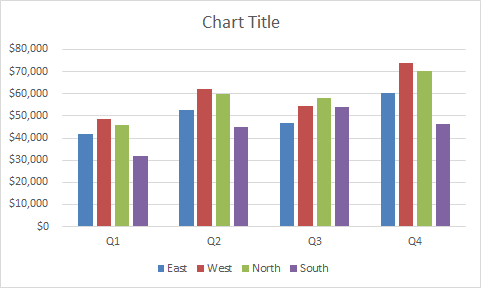This chart shows quarterly sales data, broken down by quarter into four regions plotted with clustered columns.Clustered column charts work best when the number of data series and categories is limited. In order to make the data labels fit into a narrow space, the chart uses a custom number format ([>=1000]#,##0,"K";0) to show values in thousands.
The data used to plot this chart is shown below:

See also: Same data in a stacked column chart.
How to make this chart
- Select the data and insert a column chart:

- Select the clustered column option

- Initial chart:

- Switch rows and columns to group data by quarter:

- After switching rows and columns:

- Move legend to top:

- Add data labels:

- Select data labels (one series at a time), and apply the custom number format for thousands:

- Set series overlap and gap width:

- Select and delete primary axis
- Select and delete gridlines
- Final stacked column chart:

At this point, you can finalize the chart by setting a title, and adjusting overall chart size, font size, and colors.







